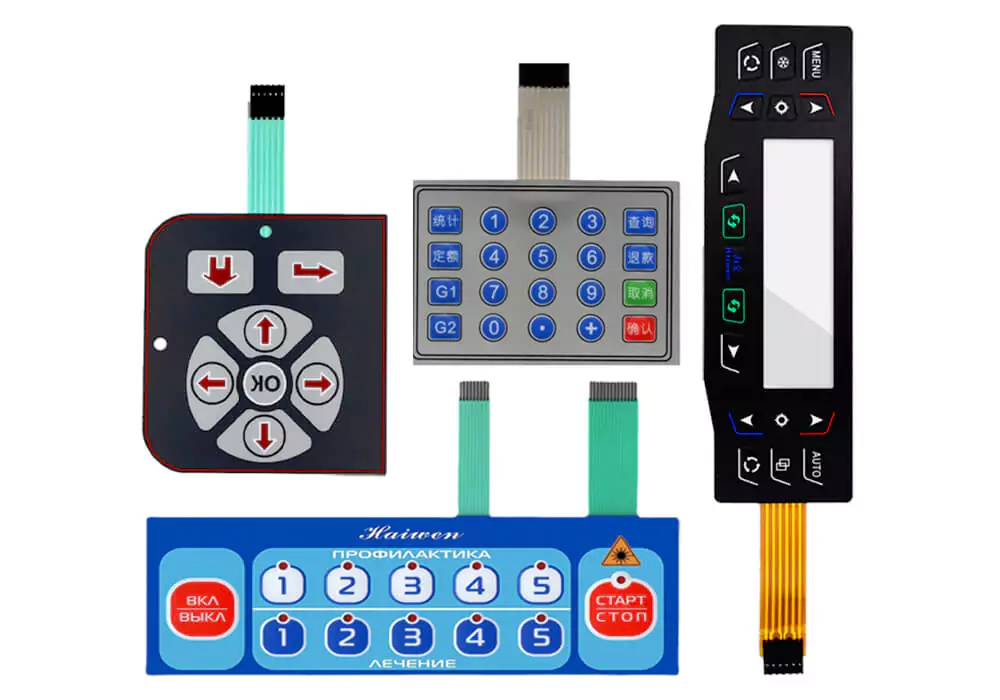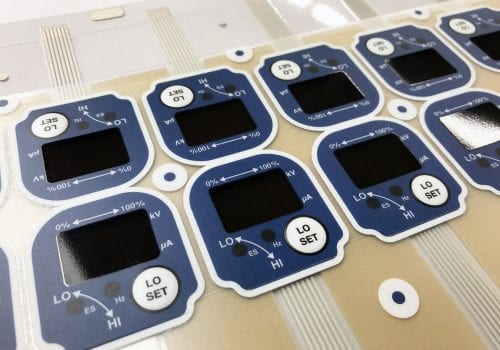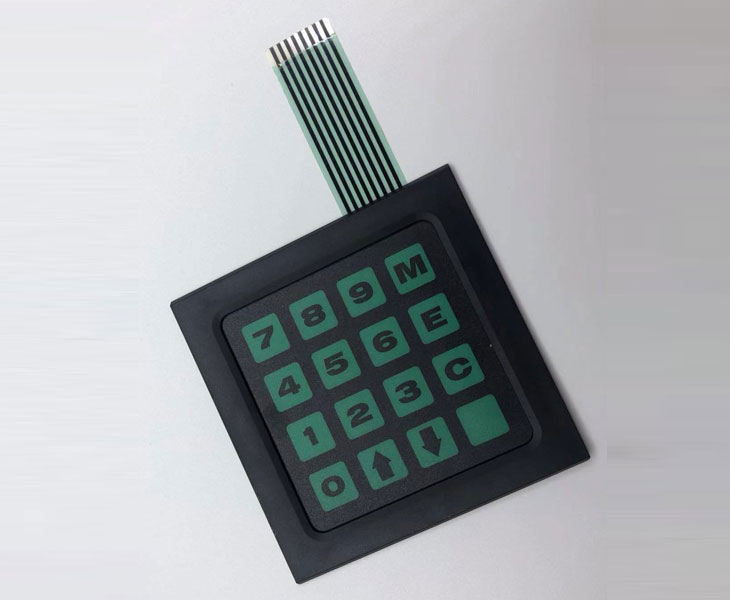The Manufacturing Refine Behind Membrane Switch Over: What You Need to Know
The production process behind membrane layer switches combines mindful design, product choice, and quality control. It starts with understanding the ins and outs of membrane switch layout and progresses via different phases, including product selections and printing methods. Each stage plays a necessary role in making sure functionality and toughness. The intricacies of layer building and construction and the extensive testing standards may reveal insights that are not immediately evident. What lies beyond these fundamental aspects?
Understanding Membrane Layer Switch Style
Membrane switches may show up easy at first glimpse, their design involves intricate factors to consider that ensure functionality and durability. The style process begins with a complete understanding of user requirements, consisting of the interface's intended application and environmental aspects. Ergonomics is a vital element, as the layout should facilitate convenience of usage while guaranteeing that tactile responses fulfills individual expectations.Moreover, the layering of components, such as visuals overlays, sticky layers, and conductive traces, have to be precisely engineered. membrane switch. This split arrangement not just influences the switch's responsiveness however additionally influences its longevity. Attention is offered to the sealing strategies used to shield against wetness and dust, which can compromise performance. Additionally, style factors to consider include appearances, where shade schemes and visual quality improve user experience. Ultimately, the layout of membrane switches equilibriums functionality, user experience, and toughness, making certain that they satisfy the demands of numerous applications properly
Products Used in Membrane Switch Over Manufacturing
When picking materials for membrane layer switch production, it is important to contemplate both efficiency and resilience. The key materials consist of polyester and polycarbonate films, which supply adaptability and stamina. These movies are typically covered with adhesive to assure proper bonding to substrates. Conductive inks, typically made up of silver or carbon, are vital for developing electrical connections within the button, permitting trustworthy operation.Additionally, a protective layer, such as a difficult layer, is often used to boost scratch resistance and durability. The option of backing product, such as acrylic or foam, can considerably affect the switch's tactile feeling and overall customer experience. Numerous ecological factors, including temperature and humidity, ought to assist product option to assure peak efficiency in specific applications. Ultimately, the best combination of materials adds to the membrane layer button's performance and life-span, making educated selections crucial for manufacturers.
The Printing Process: Creating Graphics and Text
The printing process in membrane layer button production plays a substantial duty in generating high-grade graphics and message. Numerous visuals style methods are utilized to guarantee visual appeal and capability, while mindful ink option techniques are necessary for toughness and efficiency. Comprehending these elements is fundamental for attaining ideal cause membrane switch layout.
Graphic Style Techniques
Graphic design strategies play a crucial function in the printing process of membrane layer switches, as they specify exactly how graphics and text will eventually appear on the last product. Reliable graphic layout includes the strategic usage of typefaces, layouts, and shades to boost readability and visual allure. Designers commonly utilize vector graphics for scalability, making sure that images stay sharp at numerous sizes. In addition, attention to contrast and placement is important, as it affects customer interaction and visual top quality. The incorporation of branding aspects, such as logo designs, must be managed with like maintain brand stability. Overall, thoughtful graphic style strategies add considerably to the performance and good looks of membrane switches, affecting individual experience and item efficiency.
Ink Option Approaches
Picking the proper ink is important for achieving the preferred visual quality and resilience in membrane button manufacturing. Numerous ink kinds are made use of, including solvent-based, water-based, and UV-curable inks. Each type uses distinct qualities, such as attachment, resistance, and adaptability to ecological variables. Solvent-based inks are often favored for their durability and vibrant colors, while water-based inks are more environmentally friendly but might have constraints in attachment. UV-curable inks supply fast treating and robust performance. Furthermore, color matching techniques assure that the picked inks straighten with style specs. Ultimately, the choice of ink must take into consideration variables such as application approach, substrate compatibility, and end-use requirements to attain premium outcomes in membrane button graphics and message.
Layer Building and Assembly

Material Choice Refine
A cautious option of products is crucial in the production procedure of membrane layer buttons, as it directly influences capability and resilience. The main products utilized consist of polyester, polycarbonate, and numerous conductive inks. Polyester is usually preferred for its superb resistance to chemicals and abrasion, making it ideal his comment is here for rough settings. Polycarbonate, on the various other hand, gives premium clearness and influence resistance, which is valuable for applications calling for exposure and toughness. Conductive inks, usually composed of silver or carbon, are important for creating reliable electric paths. Furthermore, the choice of adhesive products affects the overall integrity of the button - membrane switch. Examining elements such as environmental direct exposure, responsive feedback, and visual demands guides manufacturers in picking the most effective materials for their details applications
Layer Bond Techniques
Sticking layers in membrane switch building and construction is an important process that ensures functionality and long life. Different adhesion methods are employed to safeguard optimal bonding between layers, which normally include making use of adhesives, warm, and stress. Pressure-sensitive adhesives (PSAs) are typically made use of for their simplicity of application and immediate bonding abilities. Additionally, thermal bonding methods can be used, where warm is made use of to trigger glue residential properties, securing a solid bond. The selection of adhesion approach largely depends upon the products involved and the certain application requirements of the membrane button. Proper positioning and consistent application of adhesives are important to stop issues, protecting the button runs effectively throughout its designated life-span.
Quality Control Steps
Ensuring quality assurance during the layer building and setting up of membrane layer buttons is essential for preserving efficiency and integrity. This procedure typically includes a number of essential measures, including comprehensive assessments at each phase of manufacturing. Suppliers make use of advanced screening methods, such as peel tests and adhesion assessments, to verify the integrity of layer bonds. Additionally, visual evaluations are carried out to determine any type of flaws in printing or material variances. Environmental conditions, such as temperature and humidity, are carefully kept track of to guarantee perfect curing and adhesion. Regular calibration of tools aids preserve accurate manufacturing standards. By applying these quality assurance procedures, makers can significantly reduce the threat of item failure, guaranteeing that the last membrane layer switches fulfill the called for requirements and consumer expectations.
Evaluating and High Quality Control Procedures

Innovations in Membrane Layer Switch Modern Technology
As improvements in innovation remain to progress, membrane buttons are taking advantage of cutting-edge advancements that enhance their capability and user experience. One remarkable advancement is the integration of capacitive touch modern technology, which permits even more responsive and instinctive interface. This change not just enhances visual appeals yet also minimizes mechanical wear and tear, prolonging the lifespan of the switches.Additionally, improvements in visuals overlay materials have actually led to enhanced longevity and resistance to environmental aspects such as moisture and UV light. These materials currently offer improved quality and brightness, additional boosting the aesthetic appeal.Furthermore, the incorporation of wise modern technology is transforming membrane changes right into interactive control panels, allowing connection with IoT tools. This connectivity fosters a Continued seamless individual experience, leading the means for applications in various markets, from medical care to customer electronic devices. Collectively, these developments setting membrane layer switches over as crucial elements in modern-day tool design.
Often Asked Inquiries
The length of time Does the Membrane Change Manufacturing Process Take?
The duration of the membrane layer button production process can vary significantly. Aspects such as intricacy, products made use of, and manufacturing quantity impact timelines, with typical production varying from a couple of days to a number of weeks for conclusion.
What Are the Typical Applications for Membrane Switches?
Membrane layer switches are typically used in various industries, including auto controls, household appliances, clinical tools, and customer electronic devices (membrane switch). Their flexibility and resilience make them optimal for applications needing user-friendly interfaces and reliable efficiency in varied atmospheres
Can Membrane Switches Be Customized for Details Requirements?

What Is the Life-span of a Typical Membrane Switch Over?
The life-span of a typical membrane switch varies, however normally, it ranges from 1 to 5 million cycles. Aspects such as use, environment, and material quality significantly influence sturdiness and general performance gradually.

Are Membrane Switches Over Eco Pleasant?
The environmental friendliness of membrane layer switches varies. Some products made use of may not be recyclable, while others can be environmentally friendly. The overall influence depends on making materials and techniques, requiring careful factor to consider during choice and disposal. The manufacturing procedure behind membrane switches combines mindful style, material choice, and high quality control. It begins with recognizing the complexities of membrane button design and proceeds through various phases, including product options and printing techniques. When choosing materials for membrane button manufacturing, it is crucial to consider both efficiency and sturdiness. A careful choice of products is essential in the production process of membrane layer switches, as it directly affects functionality and longevity. The choice of bond method mainly depends on the products involved and the details application requirements of the membrane layer button.